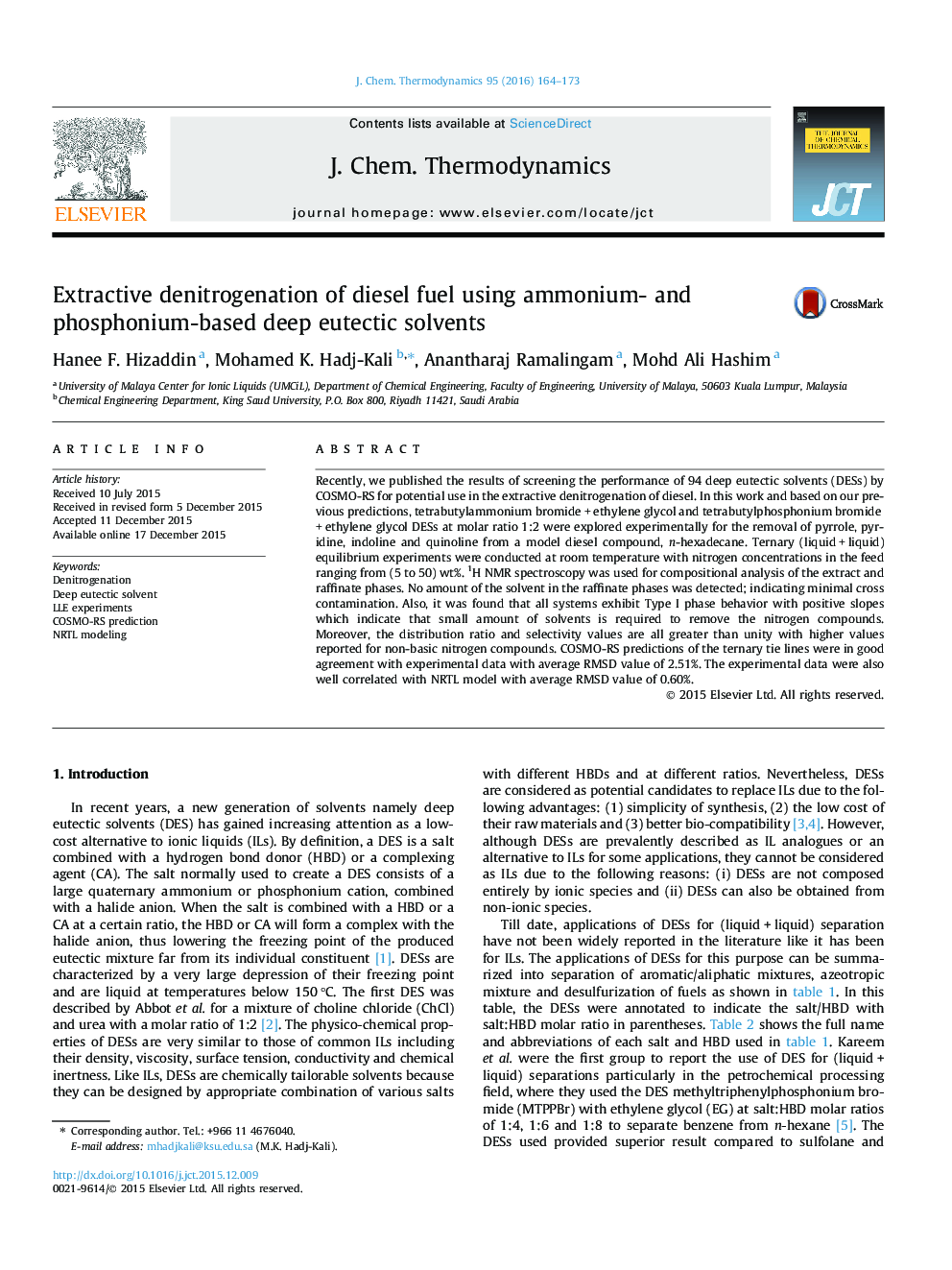| کد مقاله | کد نشریه | سال انتشار | مقاله انگلیسی | نسخه تمام متن |
|---|---|---|---|---|
| 215102 | 1426218 | 2016 | 10 صفحه PDF | دانلود رایگان |
• Two deep eutectic solvents were investigated experimentally for denitrogenation based on a previous COSMO-RS screening.
• Ammonium- and phosphonium-based DESs were used to remove four nitrogen compounds from model diesel compound.
• The DESs reported good values of selectivity and distribution coefficient, indicating high separation capability.
• NRTL and COSMO-RS models were used to describe the ternary LLE phase diagrams with excellent agreement.
Recently, we published the results of screening the performance of 94 deep eutectic solvents (DESs) by COSMO-RS for potential use in the extractive denitrogenation of diesel. In this work and based on our previous predictions, tetrabutylammonium bromide + ethylene glycol and tetrabutylphosphonium bromide + ethylene glycol DESs at molar ratio 1:2 were explored experimentally for the removal of pyrrole, pyridine, indoline and quinoline from a model diesel compound, n-hexadecane. Ternary (liquid + liquid) equilibrium experiments were conducted at room temperature with nitrogen concentrations in the feed ranging from (5 to 50) wt%. 1H NMR spectroscopy was used for compositional analysis of the extract and raffinate phases. No amount of the solvent in the raffinate phases was detected; indicating minimal cross contamination. Also, it was found that all systems exhibit Type I phase behavior with positive slopes which indicate that small amount of solvents is required to remove the nitrogen compounds. Moreover, the distribution ratio and selectivity values are all greater than unity with higher values reported for non-basic nitrogen compounds. COSMO-RS predictions of the ternary tie lines were in good agreement with experimental data with average RMSD value of 2.51%. The experimental data were also well correlated with NRTL model with average RMSD value of 0.60%.
Journal: The Journal of Chemical Thermodynamics - Volume 95, April 2016, Pages 164–173
